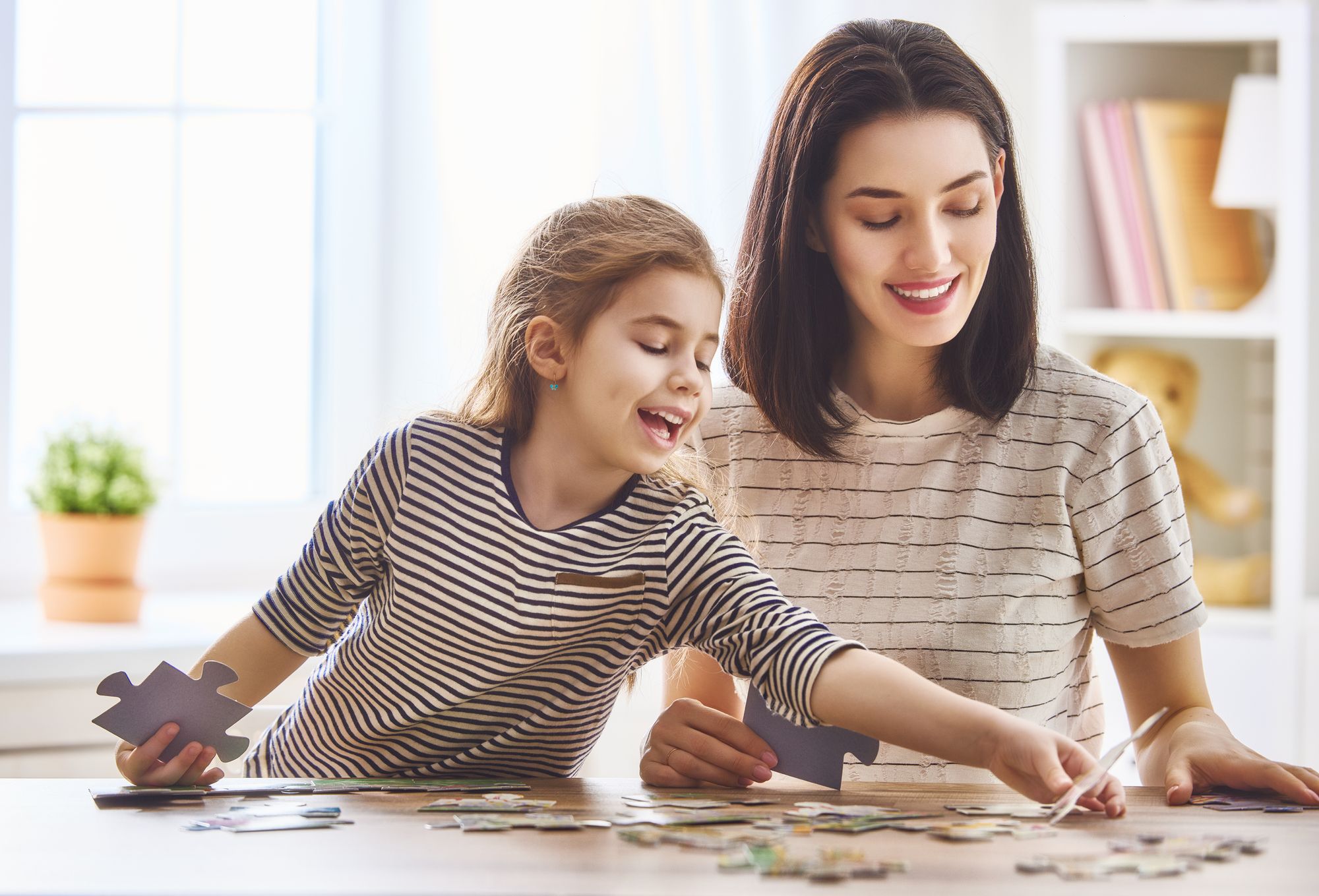Talking, understanding others, and knowing what others are saying are really important skills in life. Social engagement and interaction are important aspects of language learning. Young children learn all about a language at an early stage
through ‘listening’ intently to how their family members are speaking the
language at home. To help us understand how we can encourage our children to build their vocabulary and enhance their social skills, we spoke to Ms. Saloni Gupta, an Early Years Curriculum Designer and Education Coach & Influencer. She has more than five years of experience in creating a wholesome curriculum for young children and working with parents from diverse backgrounds. She holds a Master’s in Early Childhood Care and Education with a specialization in language and literacy development. She is fondly known as miss.kind.teacher on Instagram where she shares insightful parenting tips and activities from her journey and experiences. She is also a member of ECDF – Early Childhood Development Foundation of India. Here is what she had to say.

Young children make sense of a language through diving into hands-on play activities with their peers and teachers on a day-to-day basis in the classroom. Sadly, with the outbreak of the coronavirus (COVID-19) pandemic – with in-person schools closed and parents’ overburdened schedules, the engagement and involvement of the young children in such group conversations and activities have declined drastically which in turn has impacted their language skills.
With these simple activities, you will be able to blend in learning through
your children’s day for beneficial language development.
Babies (0-12 Months)
Spot And Say!
This is the most common activity that we engage in while interacting with
young children. During the course of the day, point to different things
around the house while naming and describing them. “See the dog? That’s
a black dog.” “See the toothbrush? That’s a yellow toothbrush.” This activity
exposes your baby to a wider range of vocabulary words and also deepens
your bond.
Dropping A Toy In The Bucket
When your baby is in a playful mood, bring a toy in front of their eyes and drop it in the bucket. When the toy hits the bottom of the bucket, you can say “dhap”. Repeat this activity a few more times. Let them engage with the toy – touch/feel it. Now drop the toy one more time in the bucket, but this time, remain silent while doing so. You will begin to notice that eventually, they will also try imitating the word. This simple activity can be integrated into your baby’s day easily; encouraging them to develop language skills.
Family Music Band
Another 100 years’ old traditional way of creating a language-rich environment for your child is to sing rhymes and songs to your baby. Instead of just talking plainly, you can use a DIY beads shaker and your calm singing voice around the baby to hold their attention a bit longer. For example, “Whenever you’re feeling happy, stretch out and give me a hug! Whenever you’re feeling sad, I am around here to spin a laughing rug! Breathe in, breathe out! Going up-calming down!” It is as simple as that!
Read From Colourful Picture Books
Reading Picture Books is the best way to get your baby’s attention and use the time constructively. Pinpoint each picture and describe them in simple sentences. “Ah! Look at this bird. It is a hen. It is red in colour. It has two eyes just like you. Let me touch your beautiful eyes.” You can use voice modulation to bring in some fun and frolic. A good time to introduce this activity is bedtime. Make it a family ritual and you will notice how your baby accepts this routine delightfully and attempts to communicate back when they hears your voice and see bright, colorful pictures.
Toddlers (1-2 Years)
Puppets And Dolls
Toddlers love to engage in make-believe play and role-plays. They are imaginative and love to imitate their loved ones’ routines with a flair of creativity. Give them puppets or dolls to engage in hearty conversations with them. Play the ‘Cooking Game’ with your little boy or girl and talk about the various vegetables, fruits, and other ingredients of a recipe. Name the utensils you can use to prepare the dish. Discuss the taste of the final dish. It can go on and on… The sky’s the limit, literally!
Play The Telephone Game
Bring your toddler a pair of toy telephones to make his playtime more conversational. Pick up one of the toy telephones and pretend that you are dialing his number to call him. Encourage him to pick up the phone and answer. Teach him basic phone conversational skills such as saying ‘hello’, ‘who is this?’. Respond to their questions and deepen your conversation by asking another question such as, “Which is your favorite cartoon?” Doing this activity regularly can help your child develop good phone etiquette and improve their speaking skills.
Free Draw The Characters Of A Book
Start reading short storybooks to your toddler. While reading the book, have descriptive conversations with your toddler. “Look at the frog. What is the frog eating?” Let your toddler closely observe the picture and respond to your question. Ensure that you speak in complete sentences and reiterate your toddler’s one-word responses in complete sentences. After reading the book, let your toddler draw away the characters or anything from the book. This will allow your toddler to develop pre-reading and pre-writing skills. Let them unleash all their creativity and enjoy independent, creative play. It is all about starting to express oneself through drawings. When they are done, discuss what they have drawn and why.
Pre-schoolers (3-4 Years)
Let’s play dress-up!
Take all the discarded dresses and fabrics out and make a cute dressing corner in your preschoolers’ room. Encourage your preschooler to play the Dress Up Game! You pretend to start dressing up and so will your preschooler. Ask questions during the course, “Who are you dressing up as today? What are you wearing? How will you do your hair?” Believe me, in no time, you will find your boy or girl hooked to their dressing corner and having an adventure of their own!
Read Books That Offer Repeated Lines And Phrases
Repeated lines and phrases in a storybook help your preschooler in remembering what comes next and lets them take an active role in your reading sessions. Ask more descriptive questions and let them fill in the gaps. “What do you think will happen next? What do you think Tim will do?” Make a word wall in the room to write down the new words that your preschooler learned to revisit weekly.
Baking
The kitchen offers many language opportunities. Here is a chance to encourage language development while you make something delicious to eat. Naming the ingredients, recipe, counting, weighing, and measuring are all part of a baking experience. Baking cookies with soft dough to roll and cut out is probably one of the best baking activities for preschoolers. After you have baked your cookies you can get creative and decorate with icing and sprinkles. Finish off your baking session with a tea party and share your cookies with the rest of the family.
Young Children (5-8 Years)
Construction Blocks
Choose age-appropriate construction toys from the wide range available in the market. Blocks and Twisters can act as great play material for your preschooler. Let your preschooler unleash their creativity and imagination to create different objects. Take this as an opportunity to talk about the physical (size, colour, texture, and shape) and imaginative (identity and personality traits) attributes of objects.
Write Gratitude Notes
Introduce the idea of exchanging gratitude notes amongst the family members. Start with verbally discussing 2 things every day that each family is grateful for. A good time to introduce this activity is at bedtime. Gradually, encourage your preschooler to draw and express her thoughts. This is a fantastic way of strengthening the emotional and social bond amongst you all.
Create A Recipe Book
Document all your fun baking or cooking sessions. Encourage your toddler to draw in the beginning and then eventually write the ingredients needed to prepare a dish. Buy a set of colours and a sketchbook dedicated only to this activity. After a week’s time, revisit all the delicacies you both prepared during the week and pat the back of your preschooler. Lastly, remember that young children learn a language the best when they have an encouraging guide who creates simple everyday situations for them to use the language. Just be consistent and use these hassle-free language activities to bring in the best learning experiences to your young one’s life!
Follow @malinisgirltribe on Instagram for more content like this and download the Girl Tribe by MissMalini App to join our Mommy Life community.

